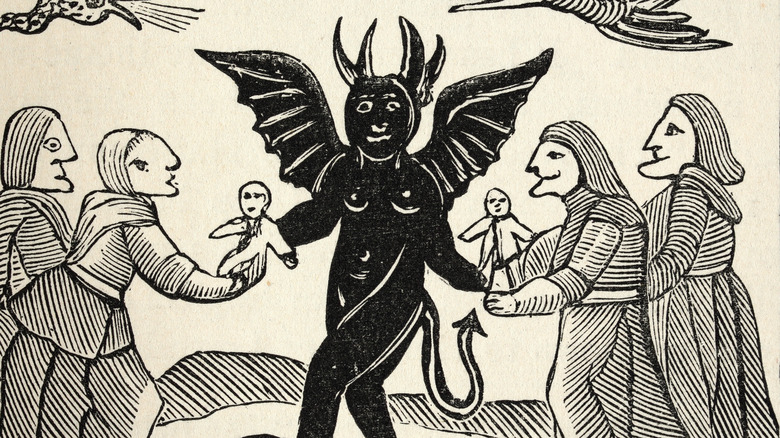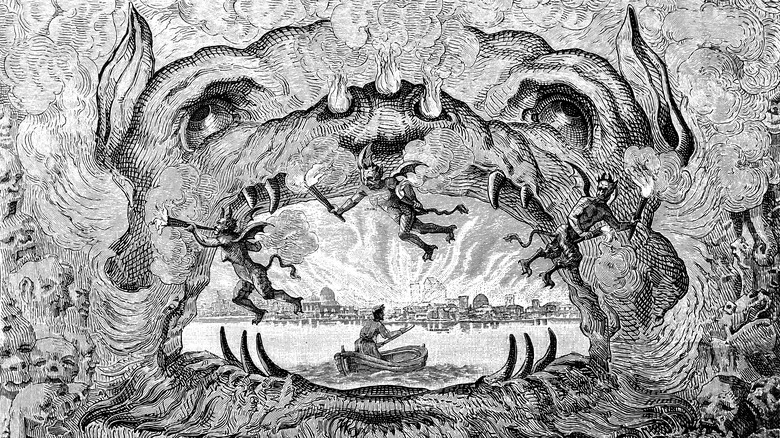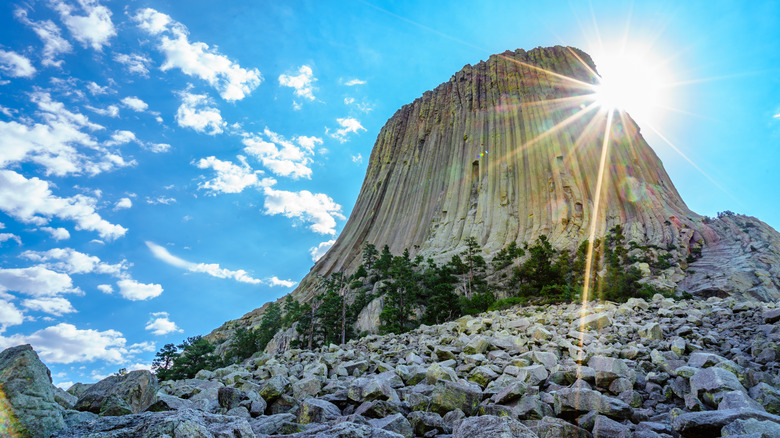The Troubling Reason So Many American Places Are Named After The Devil
Across the United States, with all its vast differences in topography, accents, and regional traditions, you will find hundreds of places with names that have a distinctively satanic designation. There's Devils Tower in Wyoming, Devil's Path in New York's Catskill Mountains, and Devil's Swamp in Mississippi, to name just a few. In some cases, it's the rugged and hostile landscape itself, as is the case with Devil's Path, according to MountainHiking.com. In other instances, the names have a darker past stretching back to the 17th century.
The Puritans who settled in New England considered the Native Americans — whose land they were living on — to be witches who worshiped the devil, according to "Cultural Bias in the New England Puritans' Perception of Indians." It wasn't much of a leap for the early European settlers to begin labeling sacred Native American religious sites with devilish names, per Study.com.
Devils everywhere
The Puritans tended to see evil everywhere, but especially when it came to Native Americans. "When the Lord first brought me to these poor Indians on the Vinyard, they were mighty zealous and earnest in the Worship of False gods and Devils," Thomas Mahyew Jr., a Puritan missionary, wrote about the Wampanoag of Martha's Vineyard (via "Cultural Bias in the New England Puritans' Perception of Indians"). This perception was shared by early settlers from Spain, France, and the Netherlands, which might help account for devil-related names across such a wide distribution. But this strange naming tradition didn't end with the colonists.
As the United States expanded across the continent, the practice of giving places evil-sounding names continued, especially out West. "There are an awful lot of Devil's Elbows around. Backbones made sense, but so many other features, such as Devil's Nose — I didn't expect so many," said Jonathan Hull, who designed an interactive map of all the devil-related place names in the U.S. (via Fast Company). While the barren and inhospitable landscape of the region may have played a part in this trend, the continued demonization of Native cultures may have also been involved.
A slap in the face
Lieutenant Colonel Richard Irving Dodge gave Devils Tower the name it has carried since 1875, although it had a similar title going as far back as 1812, when it was mapped out as Devils Mountain, according to National Parks Traveler. Dodge considered Native Americans "inhuman savages" and looked the other way as gold miners occupied Lakota land in the Black Hills of South Dakota in violation of a treaty, according to American Indian Quarterly.
The imposing butte had various names before Dodge came along — including the Lakota name Mato Tipil'a (Bears Lodge) — and it is still held as a sacred site. "To name it Devils Tower is a slap in the face because of what the whites used to call Indians back then: they were devils, dirty devils," Diana Mitchell, a member of the Eastern Shoshone, told The New York Times in 1997. "Who wants to pray at something called Devils Tower?"


